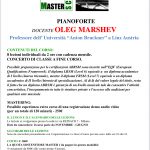CLASSICAL MUSIC ON THE WEB
Emil von Sauer (1862-1942) Suite Moderne (1906) Aus lichten Tagen (Date of composition not known) Drei Konzertetuden (1910) Galop de Concert in E flat minor (1911) Oleg Marshev (piano) Rec. Mantzius Garden, Birkerod, Denmark, Feb 2003, Steinway Model D piano. Suite and Galop de Concert (Volume 5 of complete works) DANACORD DACOCD 595 [61.25]
One of the things that annoys me most about some reviewers and musicologists is the ‘Macbeth’ approach to composers who are not noted for there propensity to push the limits of composition to new and further bounds.
Let me explain. The stanza recited by the witches in the opening scene of the fourth act is familiar to all schoolchildren:-
Eye of newt and toe of frog, Wool of bat and tongue of dog, Adder’s fork and blind-worm’s sting, Lizard’s leg and owlet’s wing, For a charm of powerful trouble, Like a hell-broth boil and bubble.
Now these well-known lines are almost parodied in the programme notes to this excellent CD -“… we hear hints of Schumann and Mendelssohn … a Russian flavour … early Scriabin … reminiscent of Glazunov … MacDowell’s Witches Dance … Hoffman’s Berceuse … Listzian quality” and so on and so forth. It is as if Emil von Sauer was simply indulging in the creation of a confection. A little bit of this and a little bit of that all tossed into the pot that he then claims as his composition.
To be fair an author will often use analogy to try to explain the nature of unfamiliar music. He will attempt to relate those pieces that the reader is likely to know and understand to help them understand that which is obscure. And I suspect that this approach is fine as far as it goes. It can be helpful to know if the general feel of the music owes more to Beethoven than Debussy. Yet there is always a grave danger that we forget the fact that few composers work in a vacuum. It is indeed rare for a composer to be indifferent to the music that is in the air about him or her. Perhaps Edgar Varиse is one of the few exceptions that proves the point. However it is surely much better to say that a composer such as von Sauer was in the Late Romantic tradition rather than try to identify phrase by phrase pastiche, allusion of sheer theft of other men’s flowers. It is infinitely more pleasurable to listen to these piano works as entities rather than constantly looking for sources. We must try to enjoy the work for its own sake and not as better or, more often, less good than another composer of our ken.
All this being said, it is only fair to admit that Emil von Sauer was best known at one time as a pianist. And not only a great pianist but also one of Liszt’s pupils. An outworking of his career was the production of editions of the complete piano works of Brahms, Chopin, Mendelssohn and Schumann. So the technique, style and modus operandi of these composers will have been well implanted in his mind.
However the truth with von Sauer lies, I believe, in his desire to produce music that suited his recitals and his public. He was to a certain extent responding to demand. The late nineteenth and early twentieth century was noted for a number of fine composer pianists, including Rachmaninov, Hofmann, Godowsky, Busoni and Paderewski. Many of these pieces were of the encore or salon variety suitable for the concert hall allowing the pianist’s technique to be well displayed. Or more prosaically, giving the public what they wanted.
The lead item on this CD is quite possibly the best – the Prelude Passione from the Suite Moderne. This was written in 1906 for fellow pupil of Franz Liszt, Giovanni Sgambati (1841-1914). This music is exactly as the title suggests – complex and chock full of exuberant pianism. The rest of the suite never quite matches the opening, although there is much of interest here. The slow Air Lugubre fits its title admirably. However at nearly ten minutes it feels a touch too long. Yet even here repeated listening brings a greater appreciation of this subtly varied movement. The Scherzo Grotesque opens quietly but soon builds up into a complex and attractive, but not too grotesque, piece! The ‘trio’ section is particularly lovely. Once again the Gavotte is an appealing bit of pianism; it well reflects the older form from the standpoint of the late romantic. The last movement is a little theme and variations. I have to concede that the ‘theme’ sounds very much as if they had been penned by Schumann – however the variations are quite certainly Sauer’s own, with many charming and attractive touches.
The set of five miniatures ‘Aus lichten Tagen’ (From the Good Old Days) are much more in the style of late nineteenth century salon music. However they are none the worse for that. The pieces are all marginally picturesque – First Signs of Spring; At the Cradle; At the Spinning Wheel. The generically named Interludium and Capriccietto are also full of reminiscence and nostalgia for ‘better days.’ Altogether it is an attractive little suite with its virtuosity far exceeding the somewhat trite titles of each movement. The date of its composition is unclear.
The first two volumes of Danacord’s Complete Works gave us the Twenty-Nine Concert Etudes. Here, on this present CD, we have another three with the same title. However these are not a supplement to this collection, as we would expect. They were written around 1913 and published whilst he was still composing the 29. There is an important difference as well. The original set of ‘studies’ are in fact works suitable for recitals and designed to appeal directly to the audience. However the present set of three Etudes are in fact genuine studies. The first is an exercise in thirds and the last a difficult exercise in octaves. The middle study is full of unexpected modulations and subtle shifts of rhythm. They all sound difficult, yet in spite of this ‘academic’ nature they are joy and a pleasure to listen to.
Sauer wrote two works entitled Galop de Concert. The present one was composed in 1911. It is a fine work in the style of Liszt.(Yes! I know I am making an analogy). Yet even amongst these bravura pages there is a sense of nostalgia and even wistfulness. Great stuff.
Danacord are extremely lucky to have Oleg Marshev as an exclusive recording artist. I have had the pleasure to review more than half of his current CD catalogue. A brief look at this catalogue reveals a tremendous range of achievement. Most of his recordings fall into the late-romantic and post-romantic tradition. We have some fine explorations into unfamiliar territory, including rare Richard Strauss piano music and the Opera and Ballet Paraphrases by Pablo Pabst. He does not neglect the Scandinavian schools of music. There are recordings of the piano concerti by the Langgaards pиre et fils; and two fascinating works by August Winding and Emil Hartmann. He has tackled the greats: Prokofiev’s Piano Sonatas, Rachmaninov’s Concerti and the complete works for piano and orchestra by Tchaikovsky are in preparation.
Then of course there is the ongoing cycle of the complete piano works of Emil von Sauer. Our present recording is the fifth and I understand that a sixth is imminent. This will include the Second Piano Concerto – a work I have not yet heard.
I have noted Oleg Marshev’s curriculum vitae in a number of previous reviews for Musicweb, however it is only fair to say that we are dealing with a very fine pianist who is totally confident in whatever style of music he is playing.
The music on this CD cannot be described as ‘great’ music. It is not ground-breaking or earth-shattering. Emil von Sauer is not a genius. However what we have is a craftsman at work. Every note of this composer’s music seems just right. There is no way that he can be accused of note-spinning. We are conscious of a great composer/pianist’s technique being reflected into his music. This is music to enjoy; to just lie back and relish. That is not to say there is no depth here – the music is actually quite full of emotion and passion.
The skill and technique and craftsmanship that Oleg Marshev bring to these works combines with the composer’s creativity to produce a satisfying, enjoyable, interesting and often quite moving experience.
I recommend this CD to all those listeners who enjoy tuneful music that is extremely well written and finely played and who are not put off music simply because it is not written by one of the very few ‘movers and shakers’ of the musical w


